In the absence of any treatment, the doctors in Kashmir are now using Convalescent Plasma Therapy to treat a certain section of Covid-19 patients in rare cases. The number of therapies is too thin to make an opinion but it is in vogue, reports Saima Bhat
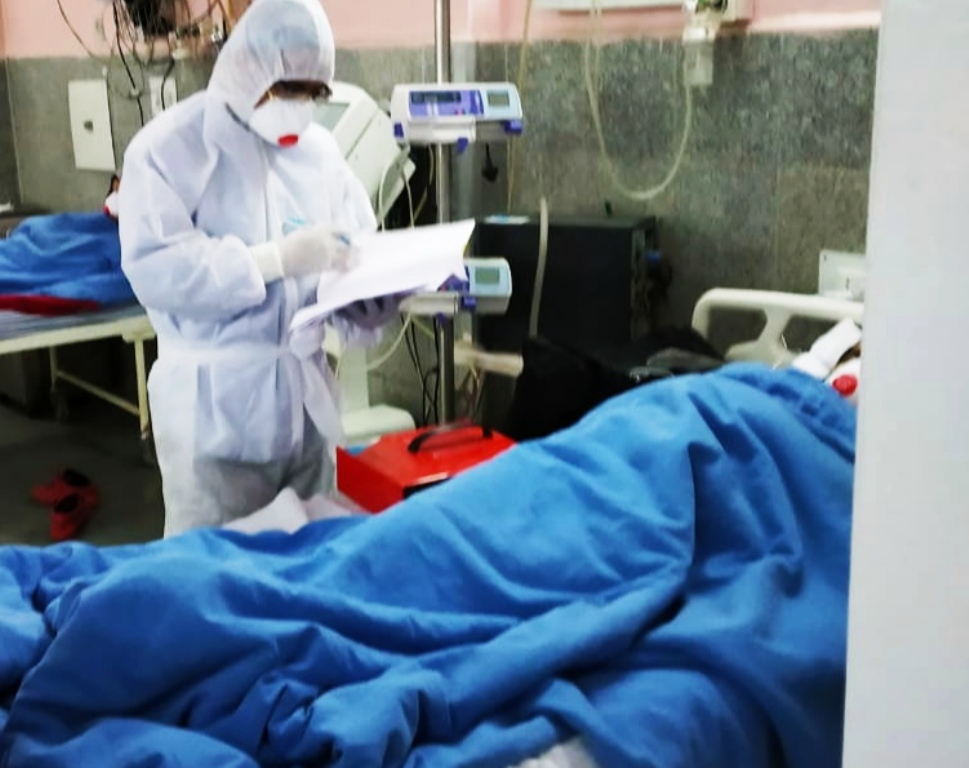
COVID-19: SKIMS conducts first-ever Plasma Therapy camp in which the individuals who had recovered from the Covid-19 infection donated their plasma. KL Image: Bilal Bahadur
At 6 pm on July 24, Dr Mudasir Qadri was attending to his father in a two-bedded room of the 8- room Infectious Diseases Block (IDB), inside the main building of tertiary care Sher-i-Kashmir Institute of Medical Science (SKIMS), at Soura. He tries to fight back his tears as he sees his father struggling with Covid-19.
Admitted in SKIMS since June 28, the senior Qadri, Haji Mohammad Yaseen’s condition has improved after receiving two plasma therapies. He has lost his wife to the pandemic but nobody dares to tell him that.
It all started on March 16, when SKIMS tested the first patient for the Coronavirus. On March 19, this hospital prepared a roster for the doctors for Covid duty. This included Dr Mudasir Qadri, 40, as well. The first thing he did after seeing the roster was he called his sister to take his parents to their ancestral house in Anantnag.
Isolating The Family
An Assistant Professor in the medicines department, Dr Qadri was more concerned for his octogenarian father, who was suffering from thrombocytosis and hypertension, and not his mother, 69, who had no underlying health problem. He later sent his wife and two kids also and started himself living with his colleagues at a guest house.
Dr Qadri and his family were otherwise living at the SKIMS hostel. “I took all the necessary precautions that my family should not get this virus from me. Well before that, I could have been a source of their infection I sent them away,” he said.
After a few days, in April, Dr Qadri started developing symptoms of Covid. He got himself tested for the virus but his report was negative. “Most likely it was a false negative,” he said. In subsequent days, he was not keeping well. His oxygen saturation was also going down so he decided to get himself admitted at the hospital, where he stayed for a day. He then decided to get an oxygen concentrator at home and for the next complete week he needed the help of this oxygen concentrator to breathe properly. By that time his wife came to know about his condition and she rushed home.
Back home in Anantnag, the senior Qadri’s didn’t know about the condition of their son. Soon after recovering, Dr Qadri joined back his duty and he decided to celebrate the Eid-ul-Fitr with his parents in south Kashmir. “After Eid I had to come back to join my duty and my parents decided to stay back. They wanted to spend more time at home so that they can look after the house and the lawns. I agreed. I thought living with me will make them prone to the virus so I took along my wife and kids and left for Srinagar,” said Dr Qadri.
On way to his hospital, he kept thinking about his parents and decided to get a helper for them. “We requested a known family and they agreed to send their daughter. It gave me a bit of relief,” he said. But after a few days, on June 25, Dr Qadri received a call from his mother saying that she was not keeping well. He instructed her to take medicines kept in her room. Following day she called him again saying, “if I die then what will you do?”
‘If I Die’
This sentence panicked Dr Qadri and the following day after duty he went home to see his parents. On seeing her son, the mother had a sigh of relief. He remembers his mother as having great tolerance. “I gave her antibiotics but the next day she wanted me to change her medicines. I was not thinking about the terms that she could be having Covid. On Monday morning when I was supposed to join my duty again, I requested them this time to come along but they refused. I had an OPD so I had to leave.”
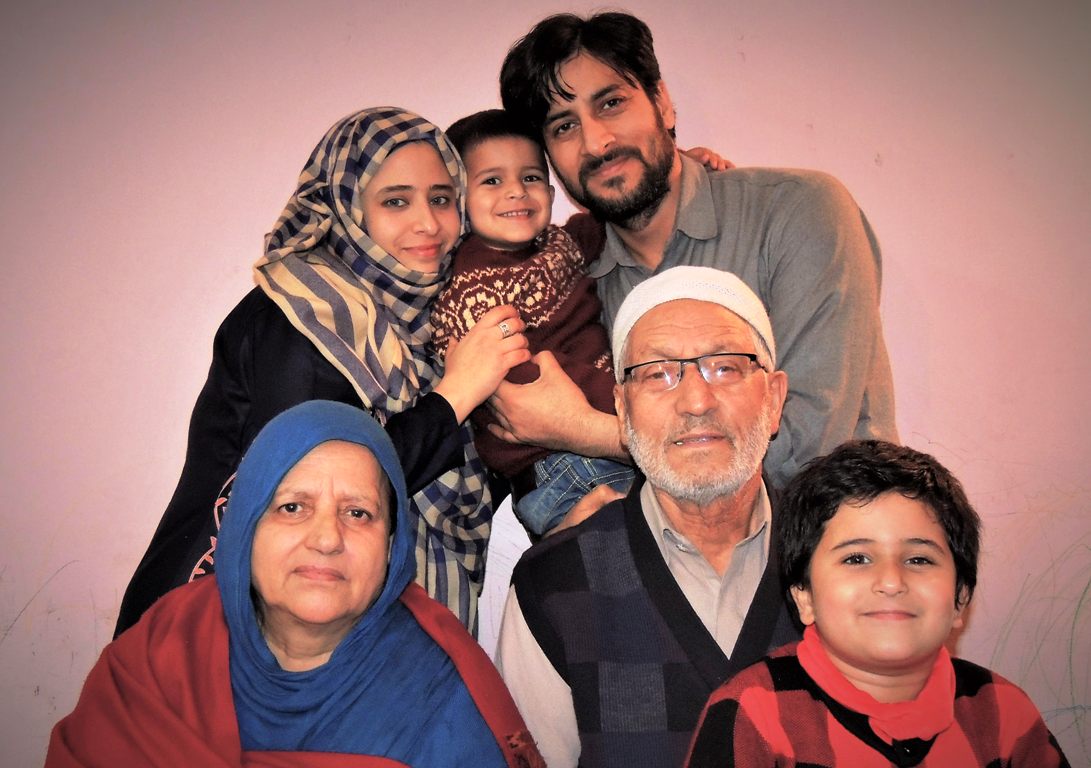
A young doctor’s family photograph with his parents. The doctor took the infection home and apparently gave to his parents. His father survived, unlike his mother despite the plasma therapy. Photo: Special Arrangement
The following day, he called his parents to know their well being but this time his father was unwell. “I was panicked. I called them to come to Srinagar but they refused. For the next two days, I was over-busy in the hospital first with bronchoscopy and then with Covid duty. On Thursday I called my cousin who lives nearby to check on my parents. My cousin told me mother had diarrhoea and father vomited. Finally, they left Anantnag on Saturday (June 27) early morning and reached here at 8.30 am.”
At home, when Dr Qadri received his parents, he said he was more worried for his father than his mother. To him, father looked dehydrated and his mother seemed better. As soon as he reached out to his quarter, he converted his room to a hospital room. “I started giving him intravenous (IV) fluids and by the afternoon when I saw mother also getting weaker, I put her on IV fluids as well. After that mother improved but her oxygen saturation was gradually getting down. I had my oxygen concentrator so I starting giving her oxygen.”
Shifting To Hospital
But following day Dr Qadri realised he can’t keep his parents like that anymore because his mother’s oxygen saturation was going down to 60s. “I called my hospital and requested to send an ambulance with staff in full gear. By this time I was convinced that my parents have got Covid. I called my sister as well. Same morning their samples were taken and by evening, June 28, both of them were declared Covid positives.” But still, Dr Qadri in his deep heart was praying to God to let them have pneumonia but no Covid. They were kept in ward 2A of the hospital, where Covid suspects are admitted.
The lung X-rays of the couple showed the senior Qadri had only a few patches of pneumonia but his mother had a bi-lateral infection and she was struggling to breathe. “Me, my colleagues and my head of the department were discussing the further treatment and we decided to go for the plasma therapy of mother as her condition was getting worse. We contacted our post-graduates who had got the virus and then recovered and Dr Sajad Bhat came the same time and gave his plasma. He was the first Plasma donor in Kashmir.” But as the plasma therapy started, the couple had to be shifted to the IDB of the hospital, where two Covid patients are kept in one room.
CPT Starts
In Jammu and Kashmir, the first-ever Convalescent Plasma Therapy (CPT) was introduced in the SKIMS hospital as an alternative treatment to treat the novel Coronavirus disease. This therapy has already been approved by the ICMR (Indian Council of Medical Research).
But in SKIMS, it was approved only after a 10 member committee put forth their recommendations to the government. The Jammu and Kashmir administration was also appraised of the recent developments at SKIMS where critically sick patients received the therapy on compassionate grounds.
As of now CPT has been approved at SKIMS and SHMS hospitals and the treatment is being explored for the Covid-19. This treatment involves introducing antibodies harvested from the blood of a recovered Covid-19 patient and injecting it into the blood of a recovering patient. The doctors, however, have to match the blood grouping and other basics.
A Medico Donor
Back at SKIMS, when these three patients were given CPT, which included Dr Qadri’s mother as well, she was shifted from the ward to IDB, under the set protocol. “In the wards, we keep Covid-19 suspects where we have a high flow of oxygen but after the patients are confirmed to be positive then they have to be shifted to the IDB section,” said a SKIMS insider.
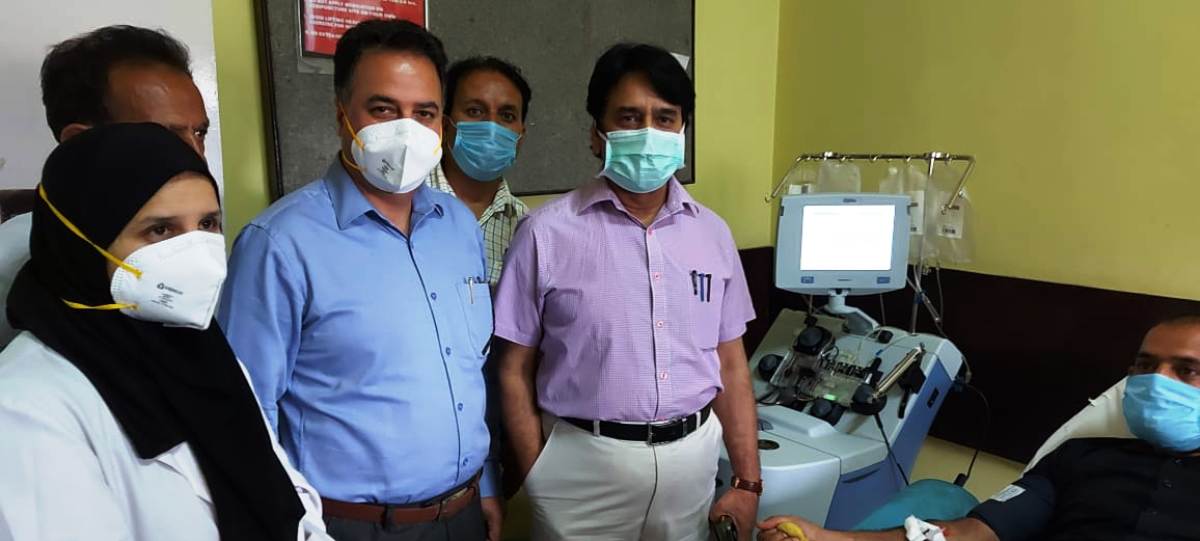
Sher-i-Kashmir Institute of Medical Sciences (SKIMS), Soura has installed sophisticated machinery for conducting plasmapheresis for COVID-19 patients.
But when Dr Qadri’s mother was shifted she became unconscious. “While shifting, her oxygen levels dropped because the cylinders can’t give a high flow of oxygen.” Before shifting, Dr Qadri was asked to give his consent if his mother needs to be put on a ventilator, to which he agreed, knowing things fully well.
“We gave her Plasma therapy but anti-viral Remdesivir drug was not available, which came after three days I guess. We had to intubate (putting her on a ventilator) her. That was the only option to save her. And after intubation her saturation improved,” said Dr Qadri.
In following three days her X-ray got cleared. “It was not less than a miracle” as per the doctors treating her. After seeing the CPT’s results Dr Qadri wanted to extubate his mother early but he couldn’t convince his colleagues.
“It was on July 4, we tried to extubate her, but as they started getting her off from the ventilator, she did not wake up. We waited till late but she did not. She had no motor power. I was getting very scared.” Dr Qadri said, “We waited again. All of her levels were normal, every organ was functioning at its peak, but she didn’t wake up. My colleagues told me maybe she needs more time to wake up so we waited again. She developed bedsores as well and the same day she had a hypoxia episode and I was not there that time.”
The situation was getting critical for Dr Qadri as his mother’s reports showed a positive sign but she was not regaining consciousness and at the same time his father’s condition was getting worse. She had not been able to come out of the sort of induced unconsciousness.
Meanwhile the couple was tested again and both of them tested negative this time. So doctors decided to go for CPT for his father as well. “We gave him CPT with antiviral doses but he didn’t improve. We gave him second CPT and this time along with the Red Blood Cells, RBCs.” And then doctors decided to shift Dr Qadri’s mother to surgical ICU on July 7.
“Now my crisis was if I could be with my mother or father so I called one of my cousins and kept him with mother because at ICU we have well-trained staff who are experts in managing the critical patients, so I thought father might need me more. Mother was deteriorating. Her fever touched 104.” Dr Qadri believes CPT works good if given at the early stage.
All treatments were given to his mother but she didn’t respond and ultimately she expired on July 9. “It was heartbreaking. She was Covid negative.” Dr Qadri took his mother and buried her in Anantnag and same day reached back to attend his father.
“Father’s condition was worsening, bilateral consolidation started getting worse. . His saturation was between 60s or 50s. The doctors asked me to intubate him but this time I didn’t allow.” As his condition was getting from bad to worse, Dr Qadri gave it a thought and changed his treatment. He started giving his father steroids, to treat the inflammatory part of the lungs and almost after 48 hours, he said his father started showing improvements and his lungs started opening up. This idea struck his mind, he said, when he was leaving for the Fateh Khawani of his mother, on the fourth day of mourning.
“It is not that we don’t give steroids to such patients but we have to wait till the patient is Covid negative. We give them Dexamethasone,” Dr Qadri said, “CPT was given to my father twice but with both the interventions his condition worsened. His condition improved only after I changed his steroid.”
Mixed Results
After starting the CPT at SKIMS in the first week of July, Dr Farooq Jan, the Medical Superintendent believes it is still premature to say anything about the impact of the treatment. “We have given this treatment to a few patients, some of them recovered and some did not. There is a mixed response so we can’t say it is 100 per cent cure for the Covid patients.”
Dr Jan added that most of the Covid patients, who are critically ill, just need a high flow of oxygen. “Just 3 or 4 patients must be on ventilators. They are the people who are with co-morbidities.”
But at the Blood Transfusion department’s help desk, many calls are received from the people who want to donate their plasma.
Dr Sabha, who is a part of this help-desk, said: “We have received a number of calls from volunteers who want to donate their plasma. There are people, who have never developed Covid, call us saying they too want to donate plasma, which shows how people are enthusiastic about helping others. So far all donations have been from volunteers and not from the relatives.”
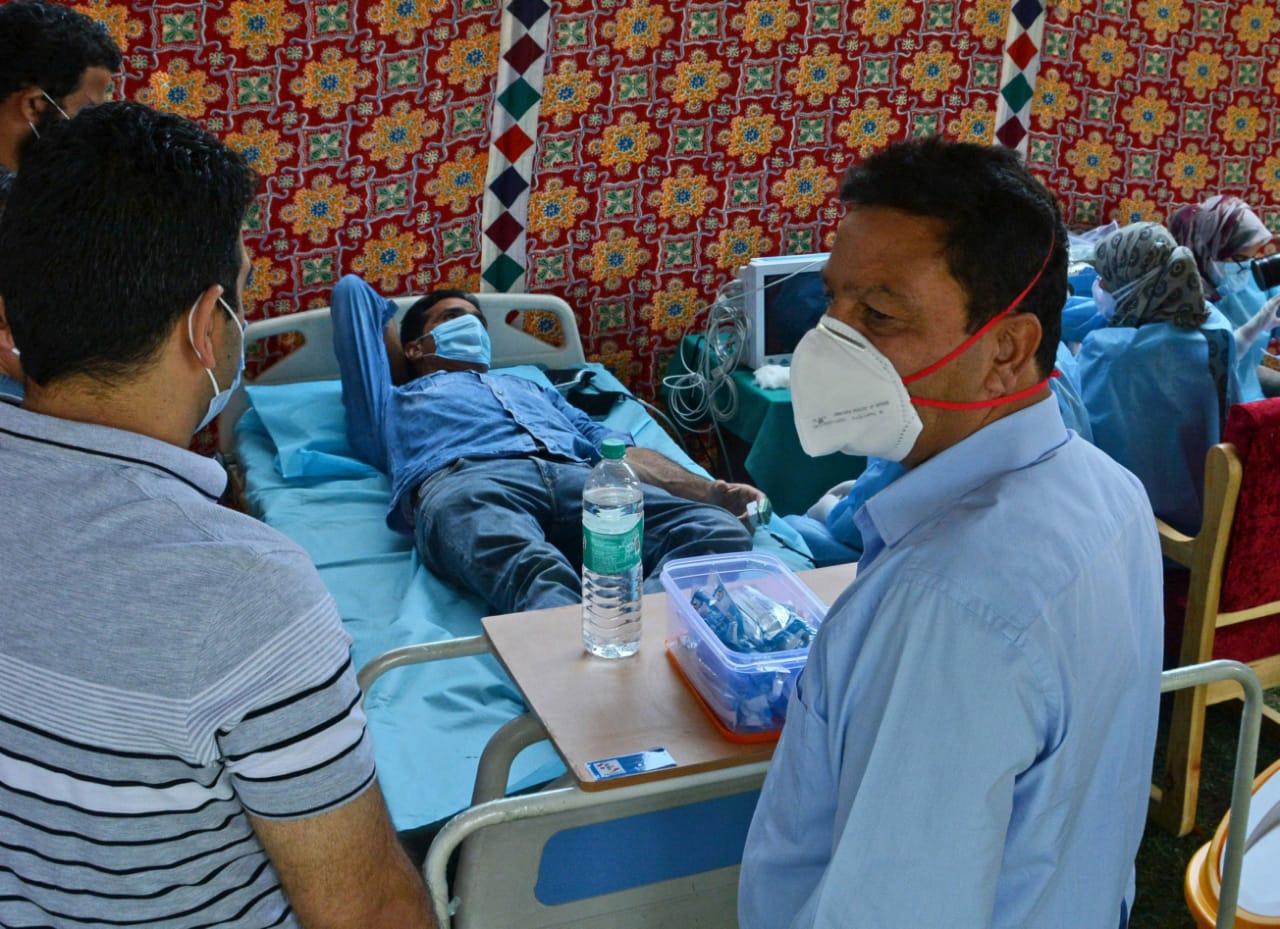
Recovered COVID-19 patients donate plasma in Srinagar on July 22 ,2020. KL Image by Bilal Bahadur
But still there have been numerous appeals on the social media these days asking for the plasma donors, some from the SKIMS as well. “We have seen patients are sick so their attendants don’t want to wait and they themselves appeal on social media and even go to their homes to get them to the hospitals. Otherwise, our administration goes to the homes of these donors and get them in ambulances,’ said Dr Sabha.
Besides acting as a bridge between the volunteers and the patients, this helpdesk also makes people understand that only certain specific people can donate plasma.
Who Can Donate?
So who can donate the plasma
According to the doctors who manage the plasma therapy, a donor should have tested negative almost a fortnight ago before donation. If the donor has crossed three months after the recovery of being Covid positive, he cannot donate plasma. Post recovery, the antibodies remain in the blood for three months only after recovery. Even though the donor meets both the parameters, if he is coughing, he cannot donate plasma. Besides, the haemoglobin of the donor should be in a particular range. Interestingly only nulliparous women – females who have not given birth to a child – can donate plasma.
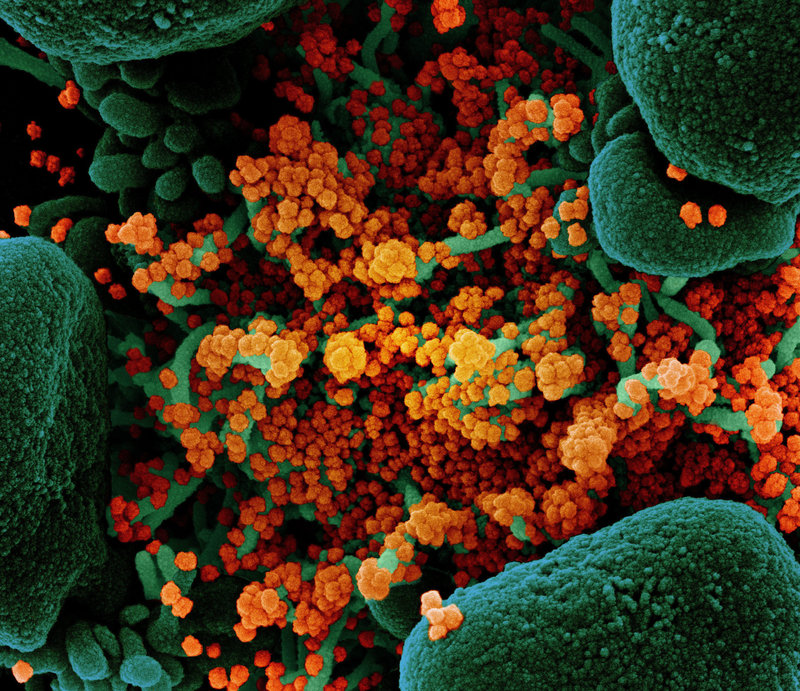
A colourized scanning electron micrograph of a cell (green) heavily infected with particles (orange) from the virus that causes COVID-19, isolated from a patient sample.
There is no ban on a donor repeatedly opting for a donation. In fact, he can do it after every 15 days. The donors should be from 18 to 65 years and they should be above 50 kgs of weight. The donor must have antibodies for the Covid-19.
What is special is that donors with AB blood Group are universal plasma donor in comparison to O group. Doctors say group specificity is more appropriate.
Sophisticated Extraction
So far the plasma donation worked as the routine blood transfusion but after SKIMS got plasmapheresis machine, now only plasma is extracted from the body of the donor.
The donor doesn’t have to donate whole blood. Dr Javaid Iqbal Khan, in-charge of the blood bank at LD hospital, said: “Blood has different components: Red Blood Cells (RBC), plasma and platelets. Plasma means buffer, it acts as the lifeline of the blood. In the human body 7 per cent of body weight is blood, and out of that 92 per cent is the plasma and the rest is RBCs and platelets.”
The plasma, Dr Khan said, has antibodies inside it. “In Covid positive patients, the chances of getting sick again is less because they produce antibodies. So when this plasma is given to sick patients, they get antibodies and their bodies fight back the virus.”
First Doctor Dies
Exceptions are there, however. Dr Shabir Ahmad Malik of Sumbal was part of the contact tracing exercise in Gurez. An ISM graduate, working with the Directorate of Health Services, he was infected by the contagion. He tested positive on July 4. He was admitted to the SKIMS on July 8 and tested negative on July 10. The hospital retained him for few days and discharged him on July 15.
On July 27, Dr Malik developed symptoms of haemoptysis that coincided with the sudden fall in oxygen saturation. His SPO2 was measured to have fallen to 84 per cent. His X-ray showed bilateral pneumonia. He was rushed to the SMHS hospital in Srinagar where he was admitted. The next morning, he died.
Survived by two minor kids and a young wife, Dr Shaista Naaz – also a medical officer (RBSK) with the NHM, the entire medical fraternity is in shock.
Preconditions For Donation
As per the latest data of the health department, around 6000 patients have recovered from the Covid-19 but all of them may not be able to donate their plasma. “Only those patients can give plasma who test positive for immunoglobulin G (IgG),” said Dr Mohammad Salim Khan, SPM head and the spokesperson for GMC associated hospitals. “Besides that, another issue is that we have more asymptomatic patients. And for CPT there is weak evidence that it helps patients.”
According to the principal of Government Medical College, Dr Samia Rashid, the SMHS has not started the CPT yet. “In the first mass gathering, we received 330 samples that included 300 policemen. We will be making our plasma bank and then we will start,” she said. “So far at GMC associated hospitals, we have given CPT to three patients and we got plasma from SKIMS. But it is too early to talk about the treatment in itself.”
Another Medico Tale
In the meantime Dr Qadri’s colleague Dr Mushtaq Ahmad, who was also attending his father Mohammad Khalil, 65, in the same block, was going through the same phase.
Actually a resident of Kulgam and presently living at Nowgam, Khalil, a retired government employee developed breathlessness and fever on July 3 and following day his doctor son took him to the hospital where he was tested for Covid and declared a positive case.
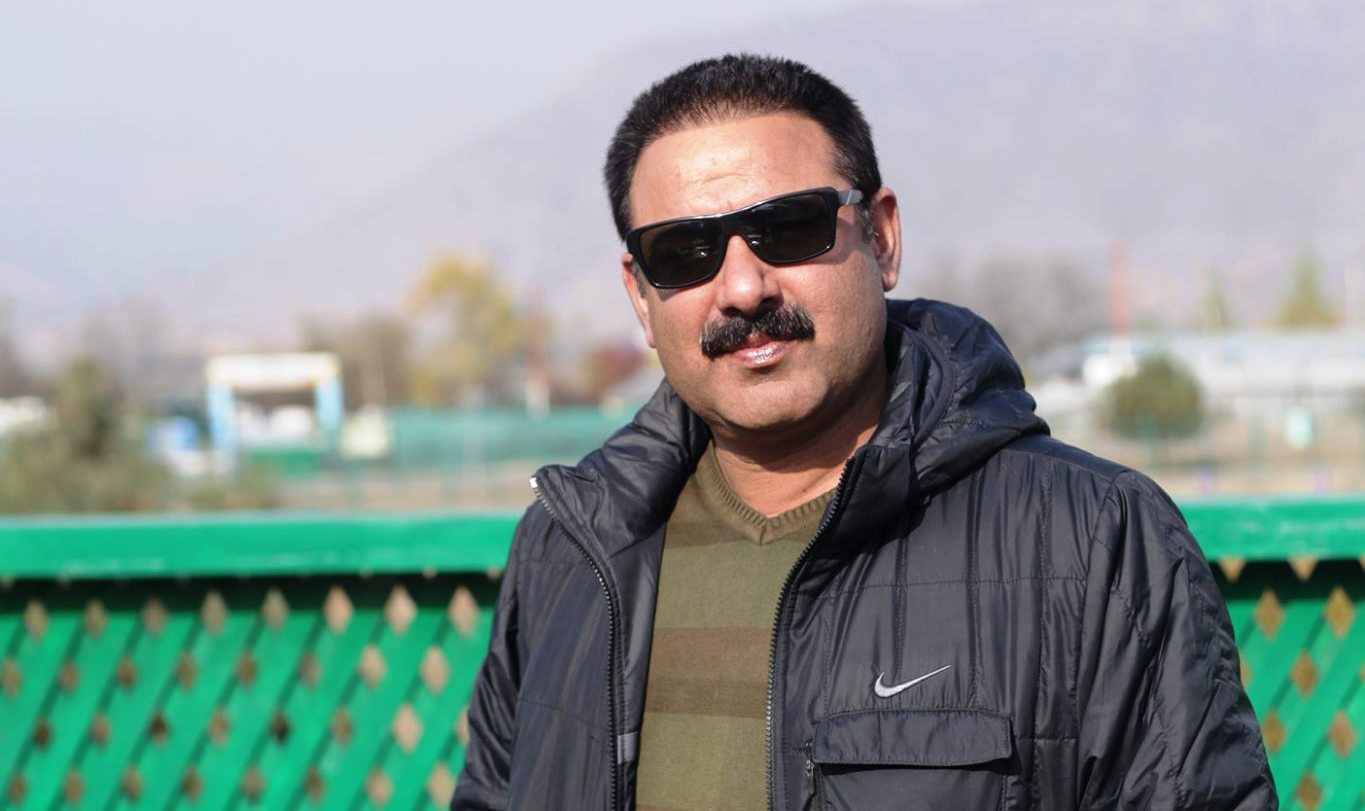
Tasaduq Jeelani, the KAS officer, who died of Covid-19 on July 31, 2020. He also underwent plasma therapy many times.
“I am on Covid duty for the last three months now. My father doesn’t move out frequently. He goes out very rarely for buying some essentials from the local market. I feel like he got this virus from me,” said Dr Mushtaq.
In the following four days his condition got worse and he needed high support of oxygen. “His pneumonia was getting worse. They asked for my permission to intubate him but I refused. I decided to go for invasive ventilation, the mechanical ventilator,” said Dr Mushtaq, who is in the general medicines department in the same hospital.
But on the fifth day, as he showed no improvement, the doctors decided to go for CPT as Khalil’s oxygen demand was increasing. “It felt like I was losing my father. I wanted to do everything to save him so I went ahead with the suggestion of CPT,” said Dr Mushtaq.
Dr Saleem Wani became his donor. In the next two days, his condition improved with the CPT, antiviral drug Remdevisir and the steroid change. “Initially he needed 30 litres of oxygen but now he just needs 4 liters and I am hopeful that in next two or three weeks, this demands will decrease.”
But as Khalil was ready to go back to his home, Dr Mushtaq said, many patients were being admitted in the hospital. “The hospital is getting overcrowded nobody knows what will happen next. Facilities are available in the hospital including ventilators too but it is mostly the high flow of oxygen that these patients need,” he added.
If the latest reports, available at the time of filing this copy, are concerned, then the SMHS is facing too much demand for the Oxygen. Insiders on July 30, said the pressures of the plant have gone low. An NGO that offers portable concentrators said in a single day they got 46 requests, the highest so far.
The post The Plasma Plan appeared first on Kashmir Life.
from Kashmir Life https://ift.tt/31nChiS
via IFTTThttps://kashmirlife.net
No comments:
Post a Comment